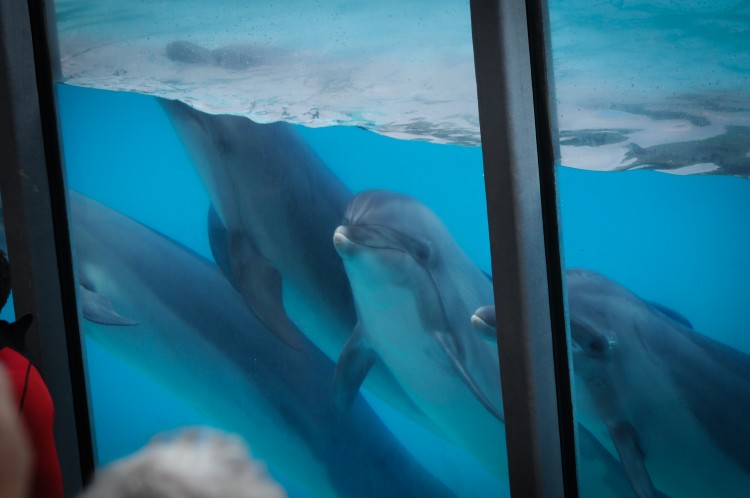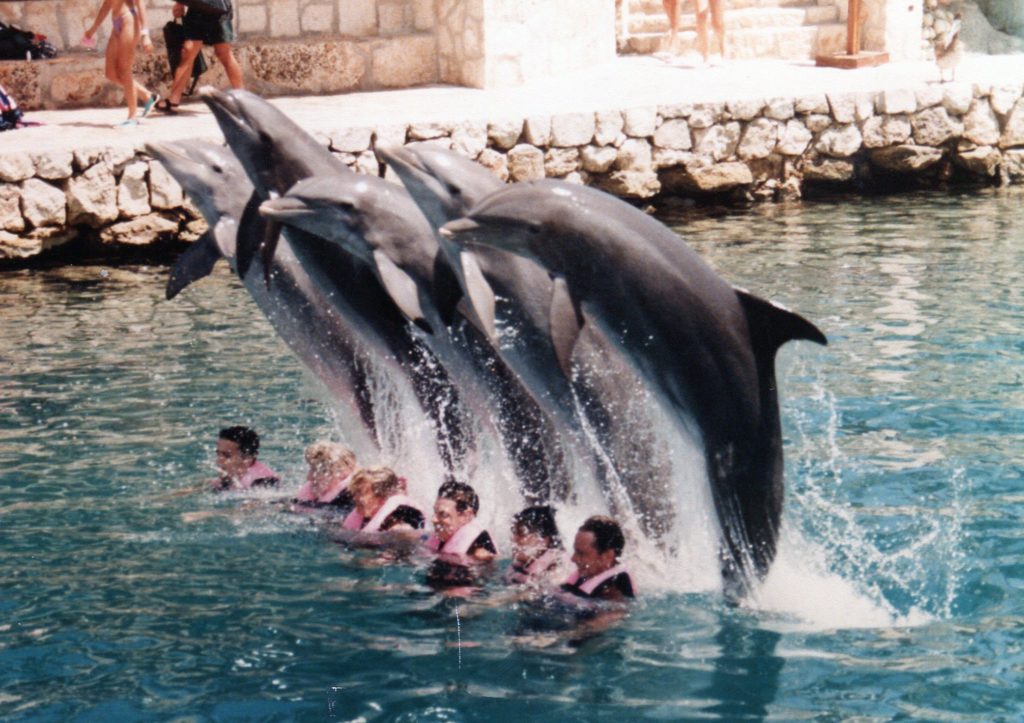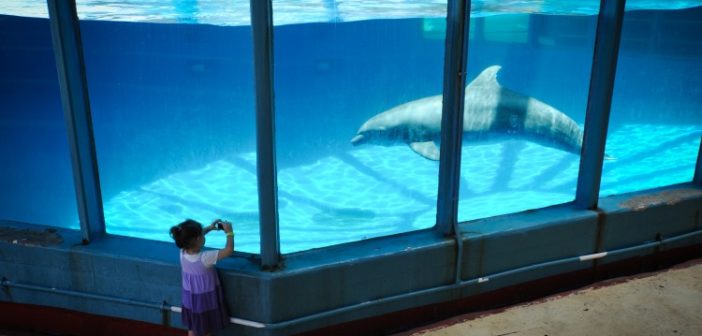There’s a common misconception about dolphins in captivity: that somehow, because this industry persists and is so profitable, that it is OK. This misconception is supported by intentionally deceiving messages, broadcast by owners and investors in captive dolphin operations. These messages serve to keep the average person in the dark about the realities of what is going on in dolphinariums and sea life parks. The lies propagated by the industry help to allow this cruel and ridiculous practice to go on. Let’s take a look at seven of the most common lies and do a bit of myth-busting.
1. A trip to see captive dolphins is educational
Even if this were true, it still isn’t a good enough justification to continue the cruelty of keeping dolphins in captivity. But the reality is that it isn’t true. Dolphins in captivity are living unnatural lives, forced to live according to the wishes of humans. Exhibiting them in this unnatural manner is misleading and teaches children things about them that aren’t true, most importantly that humans have the right to do whatever we want with them. It’s important that parents don’t make the mistake of condoning treating animals this way to their children.
2. Dolphinariums are specially designed to mimic natural habitats

It’s not hard to see how different this is from a dolphin’s natural habitat. Image credit Jo-Anne McArthur / We Animals.
This one isn’t the least bit complicated to see through, but many people still don’t understand how false it is. When they are in their natural habitat, dolphins swim up to 100 miles every single day, and the space that a dolphinarium restricts them to is many times smaller. Furthermore, they’re not in social groups or with their families in the dolphinariums. This isn’t even close to a natural habitat.
3. Dolphins can be domesticated
While domesticated dogs differ in many meaningful ways from their wild ancestors, it’s simply not the same with dolphins. A captive dolphin is a wild dolphin in a tank, it’s as simple as that. Domestication has not occurred, and if you drop one of those dolphins in the sea they would happily swim away without looking back. Unfortunately it’s not that easy, as a lifetime in captivity deprives a dolphin of the skills and social network needed to survive in the wild.
4. Dolphinariums are used for research and conservation
There is a widespread misconception that all dolphin species are endangered. This is a misconception that the dolphin captivity industry would like to keep spreading, since it’s used to justify what they are doing. In reality, it’s simply not true. While many species of dolphin are endangered, the bottlenose dolphin, which is the species most commonly kept in captivity, is not. Bottlenose dolphins are doing well, other than those locked up in dolphinariums. Even if they were endangered, captivity is of no benefit to wild populations, as only 40 dolphins have been returned to the wild from captivity in half a century.
5. Dolphins want to interact with humans

A swim with dolphins attraction at a Mexican resort. Despite what we like to imagine, dolphins in these situations are not doing what they do for the pleasure or being with humans. Image credit Kim Bartlett – Animal People, Inc.
Human-like attributes have been applied to dolphins for many years. There’s a misconception that, just because instances in which dolphins outright attack a human being are very rare, somehow this means they are at home amongst humans and enjoy being used for human entertainment. This is wrong. Performing dolphins are trained, day in and day out, bonding with their trainers out of necessity rather than choice. They can’t escape the interactions and they have no choice in the matter.
6. Captive dolphins are happy and healthy
Well, if you stop believing just one of the lies that are on this list today, it ought to be this one. None of the behaviors of dolphins in captivity demonstrate happiness or good health, particularly mental health. They are mentally scarred, listless and bored. Frequently, captive dolphins will just swim round and round. This dolphin version of pacing is an example of stereotypical behavior, which is see as indicative of poor mental health in captive animals. Some will even attack other dolphins in frustration.
7. Dolphins are born performers
Captive dolphins are trained over and over to do the tricks they do. Their brain is conditioned to understand that doing what is asked of them will mean they get a meal, which is the most they can hope for in their situation. It’s not an enjoyable pastime done freely for the thrill of it.
Conclusion
People need to get their heads out of the sand and observe the sad realities about the lives of captive dolphins. The more this industry can be viewed for what it really is, the more we can work to end it for good.
Featured image: a child looks at a captive dolphin. Image credit Jo-Anne McArthur / We Animals.






1 Comment
Dolphins are also unsafe for humans to interact with closely. While there are many stories of wild dolphins rescuing stranded sailors, there are also many stories of aggressively territorial or sexually aroused dolphins harming humans who are in the water with them. Good fences make good neighbors, and ethically done whale-watching makes a good alternative.